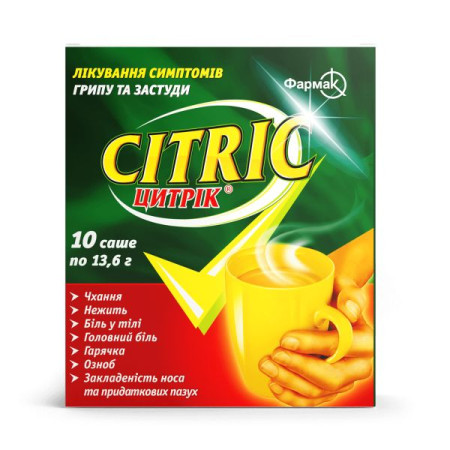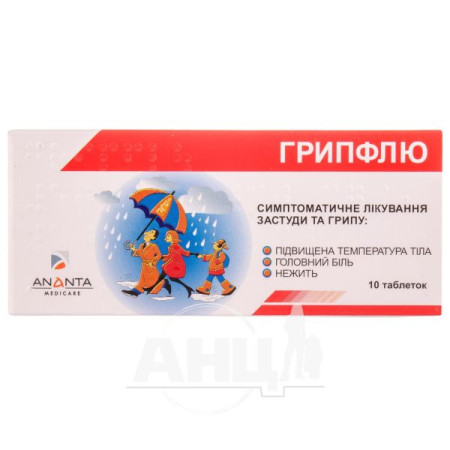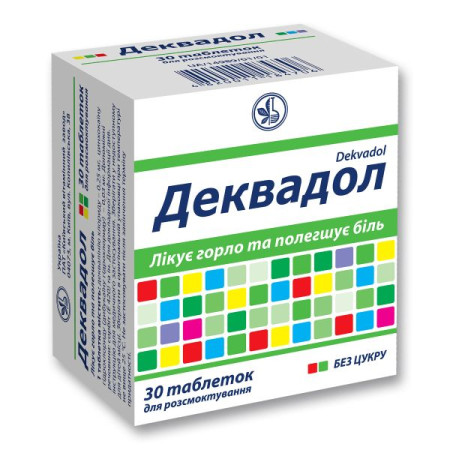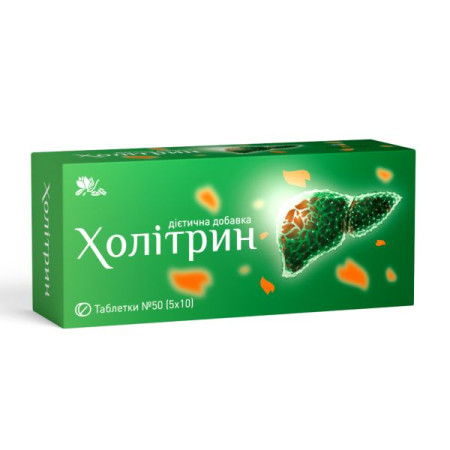Artoxan film-coated tablets 20 mg blister No. 10

Instructions Artoxan film-coated tablets 20 mg blister No. 10
Composition
active ingredient: tenoxicam;
1 film-coated tablet contains tenoxicam 20 mg;
excipients: lactose monohydrate; pregelatinized starch 1500; talc; magnesium stearate; film coating Opadry® II Yellow 85F220095 (polyvinyl alcohol; macrogol; titanium dioxide (E 171); talc; iron oxide yellow (E 172); tartrazine aluminum lake (E 102); sunset yellow FCF aluminum lake (E 110)).
Dosage form
Film-coated tablets.
Main physicochemical properties: round biconvex tablets, film-coated, yellow.
Pharmacotherapeutic group
Nonsteroidal anti-inflammatory and antirheumatic drugs. Oxycodone. ATX code M01A C02.
Pharmacological properties
Pharmacodynamics
Tenoxicam is a thienothiazine derivative belonging to the chemical class of oxicams. As a nonsteroidal anti-inflammatory drug (NSAID), tenoxicam has anti-inflammatory, analgesic and antipyretic properties, and it also inhibits platelet aggregation. Tenoxicam potently inhibits prostaglandin biosynthesis both in vitro (sheep seminal vesicles) and in vivo (protection of mice against arachidonic acid-induced toxicity).
In vitro studies of cyclooxygenase (COX) isoenzymes expressed in human COS-7 cells showed that tenoxicam inhibits COX-1 and COX-2 isoenzymes to the same extent (COX-2/COX-1 ratio of 1.34).
In vitro studies with leukocyte peroxidase have shown that tenoxicam neutralizes active oxygen at the site of inflammation (radical scavenger).
More than 70,000 patients have participated in clinical trials of tenoxicam (oral, rectal, and intravenous administration).
Pharmacokinetics
Absorption
After oral administration, tenoxicam is rapidly and completely absorbed from the gastrointestinal tract. The maximum concentration (Cmax) is reached 2 hours after administration. When tenoxicam is administered orally with food, its absorption is not reduced, but there is a delay in reaching Cmax.
Distribution
After intravenous administration of 20 mg tenoxicam, the plasma concentration of the drug decreases rapidly within the first two hours, mainly due to distribution. Due to this short time interval, no significant differences in plasma concentrations are observed between the intravenous and oral routes of administration. At steady state, the mean volume of distribution is 10 to 11 liters.
When administered intramuscularly, tenoxicam reaches 90% or more of Cmax after only 15 minutes, i.e. earlier than after oral administration. Otherwise, differences in plasma levels between the two routes of administration occur only within the first two hours after administration. Bioavailability after intramuscular administration is complete and does not differ from that determined after oral administration.
In the blood, tenoxicam is more than 99% bound to albumin. Tenoxicam penetrates well into the synovial fluid, but Cmax is reached later than in blood plasma.
At the recommended dosage regimen of 20 mg once daily (oral or parenteral), steady state is usually achieved within 10-15 days without accumulation. The mean maximum plasma concentration at steady state is 11 mg/l, which did not change even during treatment for up to four years.
As shown by pharmacokinetic results, the equilibrium concentration in blood plasma is 6 times higher than after a single dose.
Metabolism
Tenoxicam is extensively metabolized to the inactive 5-hydroxypyridyl metabolite. Other metabolites occur as glucuronized compounds.
Elimination
The mean elimination half-life of tenoxicam is 72 hours (range 59-74 hours). Up to two-thirds of the dose is excreted in the urine (mainly as the inactive 5-hydroxypyridyl metabolite) and the remainder in the bile (a significant proportion as glucuronides). Less than 1% of the administered dose is excreted in the urine as unchanged drug. Total plasma clearance is 2 ml/min.
The pharmacokinetics of tenoxicam are linear in the studied range from 10 mg to 100 mg (after a single dose).
Pharmacokinetics in special patient groups
Elderly patients are at increased risk of adverse reactions when treated with NSAIDs, especially gastrointestinal bleeding and perforation, which may be fatal (see section "Special warnings and precautions for use").
Studies have shown that elderly patients, patients with renal insufficiency or liver cirrhosis do not require dose adjustment of tenoxicam to achieve the same plasma drug concentration as healthy volunteers.
Patients with rheumatic diseases and elderly patients have the same pharmacokinetic profile as healthy volunteers.
Due to the high level of binding of tenoxicam to plasma proteins, caution should be exercised in cases of significant reduction in plasma albumin concentration (e.g., nephrotic syndrome).
In preclinical (animal) studies with tenoxicam, as with other prostaglandin synthesis inhibitors, effects on the kidneys and gastrointestinal tract (GI) were observed, as well as an increased incidence of dystocia and delayed parturition.
Tenoxicam has no teratogenic potential. Studies in rats have shown that tenoxicam prolongs and delays labor. Pregnant rats are more susceptible to adverse reactions.
Tenoxicam does not affect fertility.
Animal studies have failed to identify the mutagenic or carcinogenic potential of tenoxicam.
Indication
Relief of pain and inflammation in osteoarthritis and rheumatoid arthritis.
Short-term treatment of acute musculoskeletal conditions, including sprains, dislocations, and other soft tissue injuries.
If oral administration is not possible, tenoxicam is also available in a form for intravenous and intramuscular administration.
Contraindication
Hypersensitivity to the active substance or to other components of the medicinal product.
Bronchospasm, urticaria or allergy-like symptoms (such as asthma or rhinitis) after taking acetylsalicylic acid or other NSAIDs in history.
Active gastric and/or duodenal ulcer or gastrointestinal bleeding.
Inflammatory bowel diseases, such as Crohn's disease, ulcerative colitis.
Third trimester of pregnancy (see section "Use during pregnancy or breastfeeding").
Severe liver dysfunction (cirrhosis and ascites).
Severe renal failure (creatinine clearance < 30 ml/min).
Severe heart failure (NYHA III-IV).
Treatment of postoperative pain after coronary artery bypass grafting (or use of a heart-lung machine).
Elderly patients, patients at increased risk of developing renal failure and patients at increased risk of bleeding should not receive the drug before anesthesia or surgery, since, as with all NSAIDs, there is an increased risk of acute renal failure and the possibility of impaired hemostasis.
Combination treatment with salicylates or other NSAIDs should be avoided due to the increased risk of gastrointestinal adverse reactions.
Interaction with other medicinal products and other types of interactions
Other NSAIDs (including COX-2 inhibitors)
There may be an increased risk of adverse reactions (including gastrointestinal bleeding and ulcers). The simultaneous use of two or more NSAIDs should be avoided.
Acetylsalicylic acid and other salicylates
Possible increased clearance and distribution of tenoxicam due to competition for protein binding sites. Concomitant use of these drugs should be avoided due to increased risk of adverse reactions (especially gastrointestinal).
Antacids, H2-histamine receptor blockers
Decreased rate (but not extent) of absorption of tenoxicam. The decrease in absorption rate is not considered clinically significant. No interaction was observed with concomitant use of tenoxicam with cimetidine.
Anticoagulants (warfarin)
Possible enhancement of the effect of anticoagulants. With simultaneous use, the effect of anticoagulants should be monitored, especially at the beginning of treatment with tenoxicam. No clinically significant interactions of tenoxicam with heparin and low molecular weight heparin have been recorded.
Cardiac glycosides
Possible worsening of heart failure, a decrease in the glomerular filtration rate and an increase in the level of cardiac glycosides in the blood plasma. Clinically significant interactions of tenoxicam with digoxin and other digitalis drugs have not been recorded.
Cyclosporine
There may be an increased risk of nephrotoxicity. Caution should be exercised when these drugs are used concomitantly.
Quinolones
Preclinical data suggest that tenoxicam increases the risk of quinolone-induced seizures. Concomitant use of these drugs may increase the risk of seizures.
Lithium
Decreased elimination of the latter has been reported. When these drugs are used concomitantly, lithium plasma levels should be monitored regularly, patients should be advised to drink plenty of fluids and informed of the symptoms of lithium intoxication.
Diuretics
Possible reduction of natriuretic activity of diuretics and increased risk of nephrotoxicity due to the ability of NSAIDs to retain potassium ions, sodium and fluid. In patients with arterial hypertension or heart failure, tenoxicam may worsen the course of these diseases. No clinically significant interactions of tenoxicam with furosemide have been recorded. A decrease in the hypotensive effect of hydrochlorothiazide has been reported when it is used simultaneously with tenoxicam.
Methotrexate
Increased toxicity of the latter may occur due to decreased elimination. Caution should be exercised when these drugs are used concomitantly.
Tacrolimus
There may be an increased risk of nephrotoxicity. Caution should be exercised when these drugs are used concomitantly.
Possible weakening of the effects of alpha-blockers, angiotensin-converting enzyme (ACE) inhibitors. Clinically significant interactions of tenoxicam with calcium channel blockers, atenolol and central alpha-adrenergic agonists have not been recorded.
Oral hypoglycemic agents
Although no effect on the clinical effects of glibornuride, glibenclamide, or tolbutamide has been reported, the patient should be carefully monitored when oral hypoglycemic agents are used concomitantly with tenoxicam.
Dextromethorphan
Possible enhancement of the analgesic effect of tenoxicam.
Cholestyramine
Possible increase in clearance and decrease in half-life of tenoxicam.
Probenecid
Increased plasma levels of tenoxicam may occur. The clinical significance of this phenomenon has not been established.
Mifepristone
Possible weakening of the effects of the latter. Tenoxicam should be used 8–12 days after the end of mifepristone administration.
Corticosteroids
There may be an increased risk of gastrointestinal bleeding and perforation. Caution should be exercised when these drugs are used concomitantly.
Antiplatelet agents, selective serotonin reuptake inhibitors (SSRIs) Increased risk of gastrointestinal bleeding.
Zidovudine
There is evidence of an increased risk of hematological toxicity in HIV-infected patients with hemophilia when zidovudine and ibuprofen are used concomitantly.
Penicillinamine, gold preparations for parenteral use
In a small number of patients taking these drugs concomitantly, no clinically significant interaction was observed.
Application features
The group at increased risk of developing kidney failure includes:
elderly patients;
patients with kidney disease;
diabetic patients with impaired kidney function;
patients with congestive heart failure;
patients with hypovolemia;
patients who are simultaneously taking diuretics;
patients who are concomitantly taking medications with known nephrotoxic potential;
patients who are concurrently taking corticosteroids.
These categories of patients are at high risk of blood loss in the peri- and postoperative periods, so they should be carefully monitored in the postoperative and recovery periods.
Due to the strong binding of tenoxicam to blood plasma proteins, the drug Artoxan should be used with caution when reducing the level of albumin in blood plasma.
General precautions for the use of systemic NSAIDs
Gastrointestinal ulcers, bleeding or perforation may occur at any time during treatment with NSAIDs, selective or non-selective for COX-2, even without warning symptoms or a history of bleeding or perforation. To reduce this risk, the lowest effective dose of Artoxan should be used for the shortest possible period of time.
Placebo-controlled studies have shown an increased risk of thrombotic cardiovascular and cerebrovascular events with some selective COX-2 inhibitors. It is not yet known whether this risk is directly correlated with the COX-1/COX-2 selectivity of individual NSAIDs. As there are currently no clinical trial data for tenoxicam at maximum doses and in long-term therapy, an increased risk of thrombotic cardiovascular and cerebrovascular events cannot be excluded.
Until such data are available, tenoxicam should only be used in patients with clinically proven ischemic heart disease, cerebrovascular disease, peripheral arterial occlusive disease, or in patients with significant risk factors (e.g., high blood pressure, hyperlipidemia, diabetes mellitus, smoking) after careful risk/benefit assessment. Furthermore, due to this risk, the lowest effective dose should be used for the shortest possible period of time.
The renal effects of NSAIDs include fluid retention with oedema and/or hypertension. Therefore, tenoxicam should be used with caution in patients with impaired cardiac function and other conditions that cause fluid retention. Tenoxicam should also be used with caution in patients taking diuretics or ACE inhibitors, and in individuals at increased risk of hypovolaemia.
The concomitant use of tenoxicam with other NSAIDs, including selective COX-2 inhibitors, should be avoided.
The risk of gastrointestinal bleeding, ulceration or perforation increases with increasing dose of Artoxan in patients with a history of ulcer, especially if complicated by bleeding or perforation (see section "Contraindications") and in elderly patients. If the use of this drug is considered necessary, treatment of these patients should be started with the lowest effective dose and continued for the shortest possible period of time. During therapy with Artoxan, patients should be monitored for gastrointestinal bleeding. For these patients, as well as for patients who are simultaneously taking drugs containing low doses of acetylsalicylic acid or other substances that may increase gastrointestinal risks, combination therapy with drugs that protect the gastrointestinal mucosa (e.g. misoprostol or proton pump inhibitors) should be considered.
It is recommended to use Artoxan with caution in patients who are concomitantly taking medications that may increase the risk of ulceration or bleeding, such as oral corticosteroids, coumarin anticoagulants, SSRIs or antiplatelet agents such as acetylsalicylic acid (see section “Interaction with other medicinal products and other types of interactions”).
Dermatological effects
The use of the drug Artoxan in rare cases can cause severe skin reactions, including exfoliative dermatitis, Stevens-Johnson syndrome and toxic epidermal necrolysis, including fatal outcomes (see section "Adverse reactions"). The risk of developing such reactions is greatest at the beginning of treatment: in most cases, the first manifestations were noted during the first month of therapy. At the first signs of skin rash, lesions of the mucous membranes or other signs of hypersensitivity, the drug should be discontinued immediately.
Hematological effects
Tenoxicam inhibits platelet aggregation and may affect hemostasis. The drug has no significant effect on blood clotting factors, clotting time, prothrombin time, or activated thromboplastin time.
Patients with bleeding disorders and patients receiving medications that prevent blood clotting should be carefully monitored.
As with other NSAIDs, concomitant treatment with anticoagulants and/or oral antidiabetic agents should be avoided unless close monitoring of patients is possible.
Inhibition of prostaglandin synthetase may have undesirable effects on renal function. Therefore, as with other NSAIDs, renal function (blood urea nitrogen, creatinine, edema, weight gain) should be monitored when Artoxan is prescribed to elderly patients or those whose special circumstances increase the risk of developing renal failure.
Cardiovascular and cerebrovascular effects
Artoxan should be prescribed to patients with uncontrolled hypertension, congestive heart failure, established ischemic heart disease, peripheral arterial disease and/or cerebrovascular disease only after a careful benefit/risk assessment. The result of the benefit/risk assessment should also be taken into account before starting long-term treatment in patients with risk factors for cardiovascular disease (e.g. hypertension, hyperlipidemia, diabetes mellitus, smoking).
Appropriate monitoring of renal function and urine output, as well as counseling, is indicated in patients with hypertension and/or a history of mild to moderate congestive heart failure, as fluid retention and edema have been reported in association with NSAID therapy.
Clinical trials and epidemiological data suggest that the use of selective COX-2 inhibitors and some NSAIDs, especially at high doses and for long periods, may be associated with an increased risk of arterial thrombotic events (e.g. myocardial infarction or stroke).
Ophthalmological effects
Visual disturbances have been reported with the use of NSAIDs. If such disturbances develop while using Artoxan, an ophthalmological examination should be performed.
Antipyretic effects
Like other NSAIDs, tenoxicam may mask symptoms of infection.
Excipients
The drug Artoxan contains lactose, therefore patients with rare hereditary forms of galactose intolerance, lactase deficiency or glucose-galactose malabsorption syndrome should not use it.
The medicine contains tartrazine aluminium lake (E 102) and sunset yellow FCF aluminium lake (E 110), which may cause allergic reactions.
Use during pregnancy or breastfeeding
Pregnancy
In animals, administration of a prostaglandin synthesis inhibitor has been shown to result in increased pre- and post-implantation losses and embryo/fetal lethality. In addition, an increased incidence of various malformations, including cardiovascular malformations, has been reported in animals treated with a prostaglandin synthesis inhibitor during organogenesis.
Tenoxicam should not be used during the first and second trimester of pregnancy unless clearly necessary. If tenoxicam is used by a woman attempting to conceive, or during the first or second trimester of pregnancy, the dose should be kept as low and the duration of treatment as short as possible.
Oligohydramnios/neonatal renal failure/narrowing of the ductus arteriosus
From the 20th week of pregnancy, the use of tenoxicam may lead to fetal renal dysfunction, which may cause oligohydramnios and, in some cases, renal failure in the newborn. These adverse reactions occur on average after a few days or weeks of treatment, although in rare cases oligohydramnios has been reported as early as 48 hours after the start of Artoxan.
Oligohydramnios is often reversible after discontinuation of treatment. Complications of prolonged oligohydramnios may include limb contractures and delayed lung maturation. In the post-marketing period, some cases of renal dysfunction in newborns have required invasive procedures such as exchange transfusion or dialysis.
In addition, narrowing of the ductus arteriosus has been reported after the use of NSAIDs in the second trimester, which in most cases resolved after discontinuation of treatment.
Antenatal monitoring for oligohydramnios and ductus arteriosus should be considered after exposure to tenoxicam for several days, starting from the 20th week of gestation. The drug should be discontinued if oligohydramnios or ductus arteriosus is detected.
During the third trimester of pregnancy, all prostaglandin synthesis inhibitors may pose risks:
Risks to the fetus:
– cardiopulmonary toxicity (premature narrowing/closure of the ductus arteriosus and pulmonary hypertension);
– impaired renal function, which may progress to renal failure with oligohydramnios (see above).
Risks for the mother at the end of pregnancy and for the newborn:
– possible prolongation of bleeding time, anti-aggregation effect, which can occur even when using very low doses;
– suppression of uterine contractions, leading to delayed or prolonged labor.
Therefore, the drug Artoxan is contraindicated in the third trimester of pregnancy (see the section "Contraindications").
Breastfeeding period
NSAIDs are excreted in breast milk. Therefore, as a precautionary measure, women who are breastfeeding should not take Tenoxicam. If the use of the drug is necessary, breastfeeding should be discontinued.
Fertility
The use of tenoxicam may impair female fertility, so it is not recommended for use in women who wish to become pregnant.
Discontinuation of the drug should be considered in women who have difficulty conceiving or are undergoing infertility investigations.
Ability to influence reaction speed when driving vehicles or other mechanisms
When using the drug Artoxan, dizziness, drowsiness, fatigue and visual disturbances may develop. In the event of such reactions, you should refrain from driving or using other mechanisms.
Method of administration and doses
Artoxan is for oral use. The tablets should be taken at the same time each day, during or after meals, with water or other liquid.
Adults
The recommended dose of the drug is 20 mg per day. The recommended doses should not be exceeded, as this does not always achieve a more pronounced therapeutic effect, and the risk of adverse reactions increases.
The duration of treatment with tenoxicam for acute musculoskeletal disorders usually does not exceed 7 days. In exceptional cases, therapy may be extended to 14 days.
Elderly patients
Elderly patients are at increased risk of developing adverse reactions and are more likely to receive concomitant medications or have impaired renal, hepatic, or cardiovascular function.
The drug should be used in elderly patients at the lowest effective dose of 20 mg for the shortest period of time necessary to control symptoms of the disease. Such patients should be carefully monitored for gastrointestinal bleeding for 4 weeks after the start of therapy.
Patients with renal and/or hepatic impairment
No dosage adjustment is necessary for patients with creatinine clearance greater than 25 ml/min. These patients should be closely monitored.
There are insufficient data to make dosing recommendations for tenoxicam in patients with creatinine clearance less than 25 ml/min.
The drug Artoxan should be used with caution in cases of low albumin concentrations (e.g., nephrotic syndrome) or high bilirubin concentrations in blood plasma, since tenoxicam binds to a significant extent to blood plasma proteins.
Children
There are no data on the safety of tenoxicam in children, therefore the drug Artoxan should not be used in this category of patients.
Overdose
Symptoms
Common symptoms of NSAID overdose include nausea, vomiting, epigastric pain, gastrointestinal bleeding, tinnitus, headache, visual disturbances, dizziness, and rarely diarrhea. More serious disorders such as convulsions, agitation, drowsiness, hypotension, apnea, coma, electrolyte imbalance, and renal failure have been reported in isolated cases. Exacerbation of bronchial asthma is also possible.
Treatment
The drug should be discontinued. Within 1 hour after overdose, it is recommended to take absorbents and wash the stomach. Antacids and proton pump inhibitors can also be used. Adequate hydration should be maintained, liver and kidney function should be monitored. The patient should be under medical supervision for at least 4 hours after overdose. If necessary, symptomatic therapy should be carried out. Hemodialysis is ineffective. There is no specific antidote.
Adverse reactions
Clinical trials of oral tenoxicam lasted from two weeks to a year. Adverse reactions or laboratory abnormalities were observed in approximately 12.5% of patients. These reactions were usually mild and transient, and resolved despite continued treatment. Only approximately 1% of patients (at doses of 20 mg) required discontinuation of tenoxicam.
The most common adverse reactions were gastrointestinal: gastric ulcers, perforations, gastrointestinal bleeding, sometimes fatal, especially in the elderly (see section "Special warnings and precautions for use"). Nausea, vomiting, diarrhea, flatulence, constipation, dyspepsia, abdominal pain, melena, haematemesis, ulcerative stomatitis, exacerbation of colitis and Crohn's disease have also been reported in association with the use of NSAIDs (see section "Special warnings and precautions for use").
Criteria for assessing the frequency of adverse drug reactions: very common (≥ 1/10); common (≥ 1/100, < 1/10); uncommon (≥ 1/1000, < 1/100); rare (≥ 1/10000, < 1/1000); very rare (<1/10000); frequency unknown (cannot be determined from available data).
From the blood and lymphatic system:
rarely - decreased hemoglobin level, anemia, agranulocytosis, granulocytopenia, leukopenia, thrombocytopenia.
On the part of the immune system:
very rarely - hypersensitivity reactions such as shortness of breath, asthma, anaphylaxis, angioedema.
Metabolism and nutrition:
infrequently - decreased appetite.
From the psyche:
uncommon – sleep disorders; frequency unknown – confusion, hallucinations.
From the nervous system:
often - dizziness and headache; frequency unknown - paresthesia, drowsiness.
On the part of the organs of vision:
frequency unknown - visual disturbances (such as blurred vision and decreased vision).
On the part of the organs of hearing and balance:
infrequently - a feeling of spinning.
From the heart:
uncommon – palpitations; frequency unknown – heart failure.
From the vascular system:
very rarely - vasculitis, arterial hypertension.
From the digestive system:
very often (11%) - stomach pain, nausea, diarrhea, constipation; often - epigastric and abdominal pain, dyspepsia; infrequently - gastrointestinal ulcer, gastrointestinal bleeding, including hematemesis and melena, gastritis, vomiting, dry mouth; rarely - mouth ulcer; very rarely - gastrointestinal perforation, pancreatitis; frequency unknown - flatulence, exacerbation of nonspecific ulcerative colitis and Crohn's disease.
From the hepatobiliary system:
very rarely - hepatitis.
Skin and subcutaneous tissue disorders:
common - itching, rash, erythema, urticaria; uncommon - rash, mild edema; rare - photodermatosis; very rare - photosensitivity, Stevens-Johnson syndrome, toxic epidermal necrolysis; frequency unknown - drug rash with eosinophilia and systemic symptoms (DRESS).
From the reproductive system and mammary glands: frequency unknown - female infertility.
General disorders and administration site conditions: uncommon – signs of fatigue, edema.
Laboratory studies:
often - increased blood urea nitrogen or creatinine, increased ALT, AST, gamma-glutamyltransferase, bilirubin; very rarely - increased blood pressure, especially in patients taking cardiovascular medications.
In the course of long-term studies (12-48 months), no increase in the frequency of adverse reactions was detected.
Adverse reactions from the post-marketing phase
Post-marketing safety is consistent with clinical trial experience.
Isolated cases of female infertility associated with COX/prostaglandin synthesis inhibitors, including tenoxicam, have been reported.
Vascular disorders: Clinical trials and epidemiological data suggest that the use of Artoxan (selective COX-1 and COX-2 inhibitors), especially at high doses and as part of long-term treatment, is associated with a small increased risk of arterial thrombotic events (e.g. myocardial infarction or stroke).
Although there is no evidence that tenoxicam increases the incidence of thrombotic events such as myocardial infarction, there is insufficient data to completely exclude such a risk with tenoxicam treatment.
Gastrointestinal: Exacerbations of ulcerative colitis and Crohn's disease have been reported after the use of tenoxicam (see section "Special warnings and precautions for use").
Reporting of suspected adverse reactions
Reporting adverse reactions after the registration of a medicinal product is important. This allows monitoring of the benefit/risk ratio when using this medicinal product. Medical and pharmaceutical professionals, as well as patients or their legal representatives, should report all cases of suspected adverse reactions and lack of efficacy of the medicinal product via the Automated Information System for Pharmacovigilance at the link: https://aisf.dec.gov.ua.
Expiration date
3 years.
Storage conditions
Store at a temperature not exceeding 25 °C in a dry place out of the reach of children.
Packaging
10 film-coated tablets in a blister; 1 blister in a cardboard box.
Vacation category
According to the recipe.
Producer
WORLD MEDICINE ILACH SAN. VE TIJ. A.Sh./WORLD MEDICINE ILAC SAN. VE TIC. AS
Location of the manufacturer and address of its place of business
15 Temmuz Mahallesi Cami Yolu Caddesi No:50 Gunesli Bagcilar/Istanbul, Turkey/15 Temmuz Mahallesi Cami Yolu Caddesi No:50 Gunesli Bagcilar/Istanbul, Turkey.
Applicant
WORLD MEDICINE LLC, Ukraine/WORLD MEDICINE, LLC, Ukraine.
There are no reviews for this product.
There are no reviews for this product, be the first to leave your review.
No questions about this product, be the first and ask your question.















